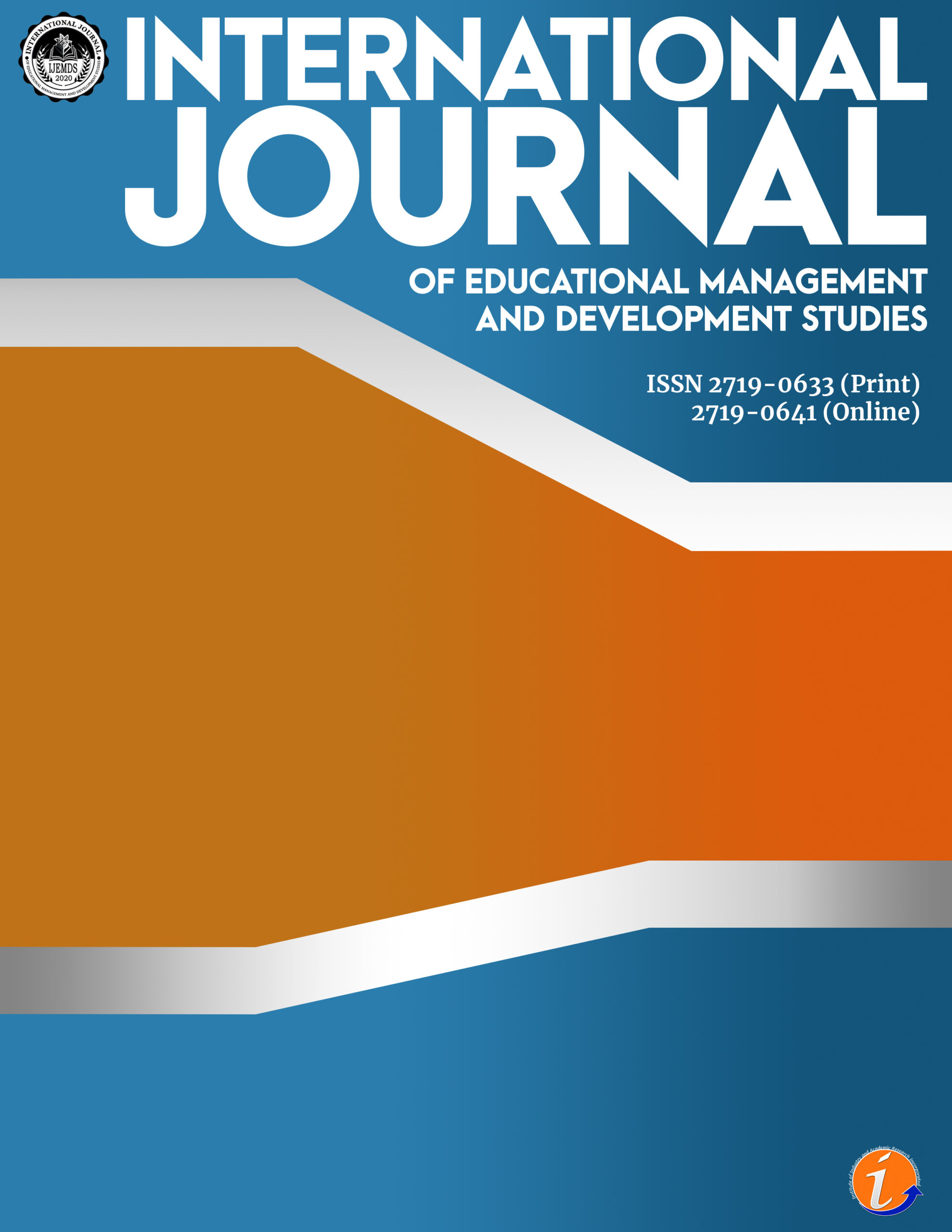This study explores the implementation of the flipped classroom model in teaching the intelligent connected vehicle (ICV) technology course and investigates its effect on student engagement, learning effectiveness, instructional strategies, and curriculum innovation. A qualitative descriptive research design was adopted, involving in-depth interviews with five experienced teachers and ten students from the Shaanxi Polytechnic Institute’s Automotive Intelligence program. Participants were selected through purposive sampling based on defined eligibility criteria. Semi-structured interviews focused on experiences, perceptions, challenges, and instructional practices within the flipped classroom setting. Thematic analysis was conducted to identify recurring themes and patterns in the data. Results reveal that flipped classrooms significantly enhanced student motivation, classroom interaction, and understanding of complex ICV concepts. Critical success factors included students’ prior knowledge, availability of technological resources, level of self-discipline, and the adaptability of teaching strategies. Teachers emphasized the importance of continuous student feedback in refining instructional content and delivery. Based on the findings, a structured "dual-subject, three-stage" teaching path was developed to promote personalized and active learning. However, challenges such as limited technical infrastructure and the learning difficulties of students with low self-regulation were also highlighted. Findings are limited to a single institution and specific course context, which may affect generalizability. Future research could incorporate quantitative or mixed-methods approaches and examine broader applications across various disciplines and educational settings. Nonetheless, the study offers meaningful insights into effective pedagogical strategies for teaching emerging technologies using the flipped classroom model.
flipped classroom, intelligent connected vehicle (ICV), active learning, instructional design, student engagement, technology-enhanced learning
Dan Han. Master of Vehicle Engineering, Doctor of Education Candidate, University of Baguio. Email: 353487330@qq.com
Marilou Saong. Corresponding author. PhD in Education, Professor, University of Baguio. Email: marilousaong@e.ubaguio.edu
"All authors equally contributed to the conception, design, preparation, data gathering and analysis, and writing of the manuscript. All authors read and approved the final manuscript."
No potential conflict of interest was reported by the author(s).
This work was not supported by any funding.
This study was conducted in accordance with the ethical guidelines set by the University of Baguio Research Ethics Review Committee.
The authors utilized ChatGPT and QuillBot in the preparation of this work to improve readability and language. Consensus AI and Elicit AI were also used for purposes of literature review, while Scribbr was used for reference formatting. The authors reviewed and edited all content produced through the use of these tools, for which they fully accept responsibility in the final publication.
Aidoo, B., Vesterinen, V.-M., Macdonald, A. M., Gísladóttir, B., & Pétursdóttir, S. (2022). Perceptions of Ghanaian student teachers on benefits and challenges of the flipped classroom: A case study. Contemporary Educational Technology, 14(4), Article ep377. https://doi.org/10.30935/cedtech/12163
Awidi, I. T., & Paynter, M. (2018). The impact of a flipped classroom approach on student learning experience. Computers & Education, 128, 269–283. https://doi.org/10.1016/j.compedu.2018.09.013
Barranquero-Herbosa, M., Abajas-Bustillo, R., & Ortego-Maté, C. (2022). Effectiveness of flipped classroom in nursing education: A systematic review of systematic and integrative reviews. International Journal of Nursing Studies, 135, 104327. https://doi.org/10.1016/j.ijnurstu.2022.104327
Birgili, B., Seggie, F. N., & Oğuz, E. (2021). The trends and outcomes of flipped learning research between 2012 and 2018: A descriptive content analysis. Journal of Computers in Education, 8(3), 365–394. https://doi.org/10.1007/s40692-021-00183-y
Braun, V., & Clarke, V. (2006). Using thematic analysis in psychology. Qualitative Research in Psychology, 3(2), 77–101. https://doi.org/10.1191/1478088706qp063oa
Cevikbas, M., & Kaiser, G. (2022). Promoting personalized learning in flipped classrooms: A systematic review study. Sustainability, 14(18), 11393. https://doi.org/10.3390/su141811393
Challob, A. I. (2021). The effect of flipped learning on EFL students’ writing performance, autonomy, and motivation. Education and Information Technologies, 26(4), 3743–3769. https://doi.org/10.1007/s10639-021-10434-1
Chang, Y. H., Yan, Y. C., & Lu, Y. T. (2022). Effects of combining different collaborative learning strategies with problem-based learning in a flipped classroom on program language learning. Sustainability, 14(9), 5282. https://doi.org/10.3390/su14095282
Clark, C. E. J., & Post, G. (2021). Preparation and synchronous participation improve student performance in a blended learning experience. Australasian Journal of Educational Technology, 37(3), 187–199. https://doi.org/10.14742/ajet.6811
Dong, L. M., & Jiao, B. C. (2014). Research on teaching application model based on flipped classroom concept. E-Education Research, 255, 108–113. https://doi.org/10.13811/j.cnki.eer.2014.07.017
Dikilitas, K., & Fructuoso, I. N. (2023). Conceptual framework for flexible learning design: The context of flipped classroom. https://doi.org/10.31265/usps.267
Förster, M., Maur, A., Weiser, C., & Winkel, K. (2022). Pre-class video watching fosters achievement and knowledge retention in a flipped classroom. Computers & Education, 179, 104399. https://doi.org/10.1016/j.compedu.2021.104399
Gao, Q., Liu, Y., Zhang, S., Yang, S., Cai, X., Liu, H., & Zhou, X. (2021). Practice and effect analysis of “flipped classroom” method in inorganic and analytical chemistry teaching. University Chemistry, 0(0), 1–0. https://doi.org/10.3866/pku.dxhx202010065
Gong, J., Cai, S., & Cheng, M. (2024). Exploring the effectiveness of flipped classroom on STEM student achievement: A meta-analysis. Technology, Knowledge and Learning, 29(2), 1129–1150. https://doi.org/10.1007/s10758-023-09700-7
Güler, M., Kokoç, M., & Önder Bütüner, S. (2023). Does a flipped classroom model work in mathematics education? A meta-analysis. Education and Information Technologies, 28(1), 57–79. https://doi.org/10.1007/s10639-022-11187-1
He, J. X. (2024). Research into the smart development of continuing education in universities in the era of digitalization and intelligence. Continue Education Research, (6). https://www.cnki.com.cn/Article/CJFDTotal-JIXE202406001.htm
He, K. K. (1997). Constructivist teaching model, teaching method and instructional design. Journal of Beijing Normal University, (5), 74–81. https://doi.org/CNKI:SUN:BJSF.0.1997-05-010
Howell, R. A. (2021). Engaging students in education for sustainable development: The benefits of active learning, reflective practices and flipped classroom pedagogies. Journal of Cleaner Production, 325, 129318. https://doi.org/10.1016/j.jclepro.2021.129318
Huang, Y., Silitonga, L. M., & Wu, T. (2022). Applying a business simulation game in a flipped classroom to enhance engagement, learning achievement, and higher-order thinking skills. Computers & Education, 183, 104494. https://doi.org/10.1016/j.compedu.2022.104494
Ismatovna, B. S. (2022). Implementation of flipped learning classroom in academic context of higher education. International Journal on Integrated Education, 5(2), 123–126. https://doi.org/10.17605/ijie.v5i2.2731
Jdaitawi, M. (2019). The effect of flipped classroom strategy on students learning outcomes. International Journal of Instruction, 12(3), 665–680. https://doi.org/10.29333/iji.2019.12340a
Jiang, C. F., Li, H., & Zhang, S. (2020). Research on the application of inquiry-based teaching in flipped classroom from the perspective of constructivism theory. Journal of Science and Education, 23, 31–33. https://doi.org/10.16871/j.cnki.kjwhb.2020.08.016
Khayat, M., Hafezi, F., Asgari, P., & Shoushtari, M. T. (2021). Comparison of the effectiveness of flipped classroom and traditional teaching method on the components of self-determination and class perception among university students. Journal of Advances in Medical Education & Professionalism, 9(4), 230–237. https://doi.org/10.30476/jamp.2021.89793.1385
Laura-De La Cruz, K. M., Noa-Copaja, S. J., Turpo-Gebera, O., Montesinos-Valencia, C. C., Bazán Velasquez, S. M., & Pérez-Postigo, G. S. (2023). Use of gamification in English learning in higher education: A systematic review. Journal of Technology and Science Education, 13(2), 480–497. https://doi.org/10.3926/jotse.1740
Laswadi, L., Setiawan, M., Efyanti, Y., Pentang, J. T., & Taresh, S. M. (2023). Distance learning design: A problem-based learning with flipped classroom model through improving student learning outcomes and learning motivation. Jurnal Inovasi Pendidikan IPA, 9(2), 216–226. https://doi.org/10.21831/jipi.v9i2.63166
Le, J. (2024). Summary of flipped classroom research in China in recent ten years. Creative Education Studies, 12(6), 504–515. https://doi.org/10.12677/ces.2024.126416
Li, X. H., & Li, Y. S. (2019). Exploration and practice of the construction of the online course “Intelligent Connected Vehicle Technology”. Modernization of Education, 6(44), 105–107. https://doi.org/10.16541/j.cnki.2095-8420.2019.44.039
Mashxura, M., & Siddiqov, I. M. Z. (2023). Effects of the flipped classroom in teaching computer graphics. Eurasian Research Bulletin, 16, 119–123. https://www.geniusjournals.org/index.php/erb/article/view/3165
Mandasari, B., & Wahyudin, A. Y. (2021). Flipped classroom learning model: Implementation and its impact on EFL learners’ satisfaction on grammar class. Ethical Lingua: Journal of Language Teaching and Literature, 8(1), 150–158. https://www.ethicallingua.org/25409190/article/view/234
Mengyan, H., & Haitao, W. (2024). A study on class self-discipline mechanism under blended English teaching mode: A case study of Panzhihua University. International Journal of Education Humanities and Social Science, 7(3), 535–549. https://doi.org/10.54922/ijehss.2024.0730
Mujtaba Asad, M., et al. (2022). Impact of flipped classroom approach on students’ learning in post-pandemic: A survey research on public sector schools. Education Research International, 2022(3). https://doi.org/10.1155/2022/1134432
Murillo-Zamorano, L. R., Sánchez, J. Á. L., & Godoy-Caballero, A. L. (2019). How the flipped classroom affects knowledge, skills, and engagement in higher education: Effects on students’ satisfaction. Computers & Education, 141, 103608. https://doi.org/10.1016/j.compedu.2019.103608
Patton, M. Q. (2002). Qualitative research & evaluation methods (3rd ed.). Sage Publications.
Pi, D. W. (2021). Project-guided teaching design of intelligent networked vehicle technology course based on OBE. Journal of Higher Education, 7(29). https://doi.org/10.19980/j.cn23-1593/g4.2021.29.019
Polat, E., Hopcan, S., & Arslantaş, T. K. (2022). The association between flipped learning readiness, engagement, social anxiety, and achievement in online flipped classrooms: A structural equational modeling. Education and Information Technologies, 27(8), 11781–11806. https://doi.org/10.1007/s10639-022-11083-8
Song, Y. (2020). How to flip the classroom in school students’ mathematics learning: Bridging in-and out-of-class activities via innovative strategies. Technology, Pedagogy and Education, 29(3), 327–345. https://doi.org/10.1080/1475939X.2020.1749721
Sullivan, J. M. (2022). Flipping the classroom: An innovative approach to graduate nursing education. Journal of Professional Nursing, 38, 40–44. https://doi.org/10.1016/j.profnurs.2021.11.005
Tian, Z. W., Chen, Z. B., & Wei, X. X. (2022). Course construction of Introduction to Intelligent Connected Vehicle Technology in the context of new engineering. Science and Technology Vision, 4, 86–87. https://doi.org/10.19694/j.cnki.issn2095-2457.2022.04.26
Torres-Martín, C., Acal, C., El-Homrani, M., & Mingorance-Estrada, Á. C. (2022). Implementation of the flipped classroom and its longitudinal impact on improving academic performance. Educational Technology Research and Development, 70(3), 909–929. https://doi.org/10.1007/s11423-022-10095-y
Utami, A. D. W., Purnomo, A., Noviyanti, M., Anam, F., & Mahsunah, E. (2021). Student-centered learning and flipped classroom of lesson study: A case study in higher education. Middle European Scientific Bulletin, 14. https://doi.org/10.47494/mesb.2021.14.662
Wang, X., Long, Y. J., Yang, M., & Yang, Q. (2023). Construction of talent cultivation mode for automobile intelligent technology major based on CDIO. Journal of Entrepreneurship in Science & Technology, 36(12), 161–164. https://doi.org/10.3969/j.issn.1672-2272.202306111
Wu, Y., Liu, S., Man, Q., Luo, F., Zheng, Y., Yang, S., Ming, X., & Zhang, F. (2022). Application and evaluation of the flipped classroom based on micro-video class in pharmacology teaching. Frontiers in Public Health, 10. https://doi.org/10.3389/fpubh.2022.838900
Zhang, F., Wang, H., Zhang, H., & Sun, Q. (2024). The landscape of flipped classroom research: A bibliometrics analysis. Frontiers in Education, 9. https://doi.org/10.3389/feduc.2024.1165547
Zhao, Y. (2022). Research on optimization of teaching time management in flipped classroom. Advances in Education, 12(6), 1983–1989. https://doi.org/10.12677/ae.2022.126301
Zhu, S. P. (2011). The influence of native language on college English teaching. Journal of Putian University, 18(4), 88–91.
Cite this article:
Han, D. & Saong, M. (2025). Enhancing intelligent connected vehicle technology instruction through flipped classroom pedagogy: A qualitative inquiry. International Journal of Educational Management and Development Studies, 6(2), 226-249. https://doi.org/10.53378/ijemds.353214
License:
![]()
This work is licensed under a Creative Commons Attribution (CC BY 4.0) International License.










